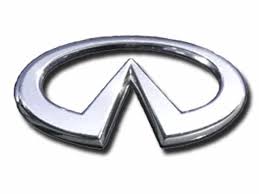M45x AWD V8-4.5L (VK45DE) (2008)
/Page-228001.png)
Alignment: Service and Repair
DESCRIPTION
Measure wheel alignment under unladen conditions.
NOTE:
"Unladen conditions" means that fuel, engine coolant, and lubricant are full. Spare tire, jack, hand tools and mats in designated positions.
PRELIMINARY INSPECTION
Check the following:
1. Tires for improper air pressure and wear.
2. Road wheels for runout.
3. Wheel bearing axial end play. Refer to RAX-5, "On-Vehicle Inspection". See: Wheels and Tires/Wheel Hub/Testing and Inspection/Rear Axle
4. Ball joint axial end play of suspension arm. Refer to RSU-5, "On-Vehicle Inspection". See: Steering and Suspension/Suspension/Testing and
Inspection/Component Tests and General Diagnostics/Rear Suspension
5. Shock absorber operation.
6. Each mounting point of axle and suspension for looseness and deformation.
7. Each of front lower link, rear lower link, radius rod, rear suspension member, suspension arm and shock absorber for cracks, deformation, and
other damage.
8. Vehicle height (posture).
GENERAL INFORMATION AND RECOMMENDATIONS
^
A four-wheel thrust alignment should be performed.
-
This type of alignment is recommended for any NISSAN/INFINITI vehicle.
-
The four-wheel "thrust" process helps ensure that the vehicle is properly aligned and the steering wheel is centered.
-
The alignment rack itself should be capable of accepting any NISSAN/INFINITI vehicle.
-
The rack should be checked to ensure that it is level.
^
Make sure the machine is properly calibrated.
-
Your alignment equipment should be regularly calibrated in order to give correct information.
-
Check with the manufacturer of your specific equipment for their recommended Service/Calibration Schedule.
THE ALIGNMENT PROCESS
IMPORTANT: Use only the alignment specifications listed in this Service Manual.
^
When displaying the alignment settings, many alignment machines use "indicators": (Green/red, plus or minus, Go/No Go). Do not use these
indicators.
-
The alignment specifications programmed into your machine that operate these indicators may not be correct.
-
This may result in an ERROR.
^
Some newer alignment machines are equipped with an optional "Rolling Compensation" method to "compensate" the sensors (alignment targets or
head units). Do not use this "Rolling Compensation" method.
-
Use the "Jacking Compensation Method". After installing the alignment targets or head units, raise the vehicle and rotate the wheels 1/2 turn both
ways.
-
See Instructions in the alignment machine you're using for more information on this.
CAMBER INSPECTION
^
Measure camber of both right and left wheels with a suitable alignment gauge.
^
Adjust in accordance with the following procedures.
Standard value
Camber: Refer to RSU-17. See: Specifications/Rear Suspension/Wheel Alignment (Unladen*)
